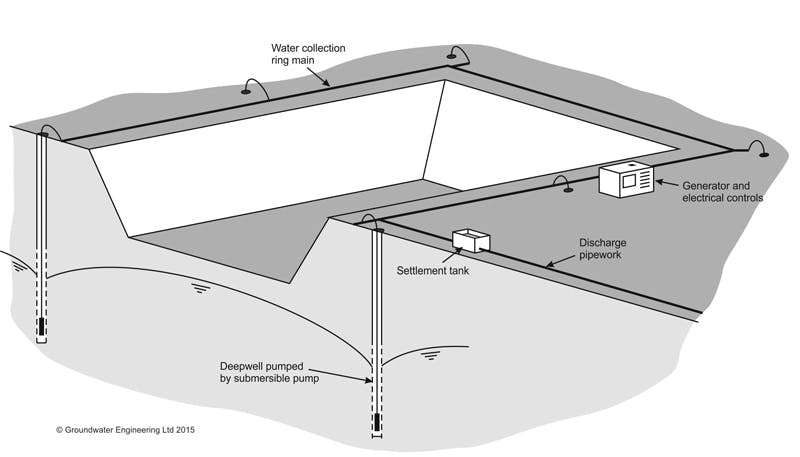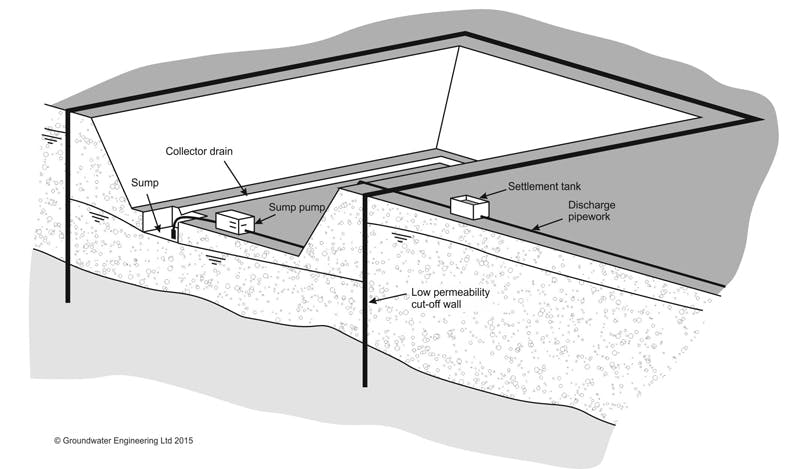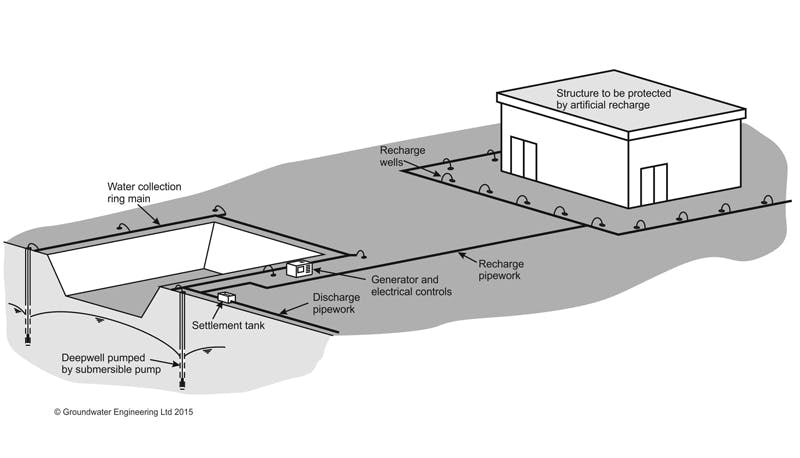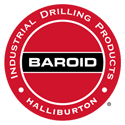Artificial Recharge for Dewatering Systems
5 October 2015Groundwater control techniques are used to allow safe and stable excavation below groundwater level as part of construction or mining projects. Previous GWE blogs have outlined how groundwater control technologies can be grouped as:
Pumping methods (where groundwater levels are temporarily lowered to allow excavation)

or exclusion methods (which use low permeability cut-off walls to keep water out of the excavation).

Groundwater control by pumping will generate water, which must be disposed of. In some circumstances the water is disposed of by re-infiltration or re-injection into the ground. This is achieved by artificial recharge, where water is injected (or recharged) into the ground in a controlled way, by means of special recharge wells or trenches.
This blog discusses artificial recharge of groundwater as used in construction dewatering and mine dewatering projects.
WHAT IS ARTIFICIAL RECHARGE?
Artificial recharge (also known as aquifer re-injection) is the process of injecting (or recharging) water into the ground in a controlled way, by means of special recharge wells or trenches. The water is pumped from the dewatering system and then piped to the recharge location, which may be a considerable distance away, where the water is injected back into the ground, typically via wells or trenches.

Artificial recharge systems are not straightforward in planning or operation and are carried out on only a small minority of groundwater lowering projects. One of the most significant difficulties is the management and mitigation of clogging of recharge wells. Water may have to be treated prior to recharge, to reduce the risk of clogging.
SUITABLE APPLICATIONS FOR ARTIFICIAL RECHARGE
When used in conjunction with dewatering systems, artificial recharge can be used as a mitigation measure to control or reduce drawdowns away from the main area of groundwater lowering. This may be necessary to minimise the potential environmental impacts, such as:
- Ground settlements caused by the effective stress increases that result from drawdown of groundwater levels. Such settlements could damage nearby structures.
- Depletion of water resources when dewatering is carried out near to existing water supply or irrigation wells or in aquifers used for water supply.
- Environmental impacts of lowered groundwater levels on sensitive water-dependent features such as wetlands.
Where artificial recharge is used to reduce drawdown as a mitigation measure, it is vital that the aim of the system is clearly defined. An artificial recharge system cannot achieve and maintain a ‘zero’ drawdown condition. Groundwater levels vary naturally in response to seasonal recharge, and under the influence of pumping by third parties. Other natural effects include tidal groundwater responses in coastal areas. A ‘zero drawdown’ system is therefore not practicable. It may be more appropriate to set a target such that groundwater levels in selected monitoring wells must not fall below defined levels. The aim of a system should be to prevent side effects (such as settlement or derogation of water supplies) reaching unacceptable levels.
Artificial recharge is sometimes used as a means to dispose of some or all of the discharge water, if other disposal routes are not practicable. If this option is being considered, it must be noted that in many countries formal permission must be obtained from the regulatory authorities to allow artificial recharge.
RECHARGE TRENCHES
A simple method of recharge for shallow applications is the use of recharge trenches, sometimes known as infiltration trenches. These are excavated from the surface using conventional excavation plant, and the dewatering discharge is fed into them from where the water infiltrates into the ground. An overflow channel is normally required to prevent overtopping of the trenches.
The recharge trench method is often used in unconfined aquifers with water tables near ground level, allowing shallow trenches to be used. The method is less practicable for recharging water where the water table is relatively deep, or if the aquifer is confined by overlying clay layers.
RECHARGE WELLS
Recharge wells (sometimes known as re-injection wells) are generally superior to recharge trenches because the wells can be designed to inject water into specific aquifers beneath a site; this can allow the stratification of soils at the site to be used to advantage in controlling drawdowns. A recharge well operates in a similar way to a pumping well, except the direction of flow is reversed. However, recharge of water into the ground is more difficult than pumping. A pumping well is effectively self-cleaning, in that any loose particles or debris will be removed from the well by the flow. In contrast, a recharge well is effectively self-clogging – even if the water being recharged is of high quality, any suspended particles or gas bubbles will be trapped in the well (or the aquifer immediately outside) leading to clogging and loss of efficiency.
A recharge well should be designed, installed and developed in essentially the same way as a pumping well. The well should be equipped with a down pipe or ‘falling main’ to feed the water down into the well, which prevents the recharge water from cascading into the well and becoming aerated (aeration of the water may promote biofouling and other clogging processes and should be avoided as much as possible). Air vents are often provided at the top of the well and pipework to purge air from the system when recharging commences, and to prevent airlocks in the system.
If water is recharged into a shallow aquifer, a system of recharge wellpoints may be considered. The recharge wellpoints are installed at close spacings using similar methods to conventional wellpoints.
COMMON OPERATIONAL PROBLEMS WITH ARTIFICIAL RECHARGE SYSTEMS
Experience has shown that it is much harder to artificially recharge water into the ground than it is to pump it out of a well. Recharge wells commonly suffer from water quality problems leading to clogging, which reduces significantly the hydraulic efficiency of the well. Similar effects occur in recharge trenches.
Several mechanisms that can lead to the clogging of recharge wells and trenches:
- Entrained air and gas binding. Bubbles of vapour (such as air or methane) present in the recharge water build up in the well, inhibiting flow of water through the filter pack into the aquifer.
- Deposition of suspended solids from recharge water. Particles (colloidal or silt and sand-sized soil particles or other detritus) carried with the recharge water will build up in the well and filter pack, blocking flow.
- Biological growth. Bacterial action in the recharge wells can result in clogging of the wells. Additionally, biofouling of the abstraction wells and pipework can release colloidal detritus (the result of the bacteria life cycle) into the water.
- Geochemical reactions. The recharge water can react with the natural groundwater or with the aquifer material.
- Particle re-arrangement in the aquifer. The permeability around the well may reduce due to loose particles around the well being re-arranged by the flow of recharge water out of the well.
These clogging effects should be considered when designing and operating an artificial recharge system. After all, a recharge system is not going to achieve its aims if it is unable to continue to inject water into the ground. Possible mitigation measures include dosing of the well with specialist chemicals to inhibit biofouling, and periodic redevelopment of recharge wells to try and return the hydraulic efficiency to close to original levels.
Blog
Dewatering for Basement Construction
12 March 2016Groundwater can be a significant problem when excavating for basement construction. This blog discusses the available techniques that can be used to dewater during basement construction.
Read More




